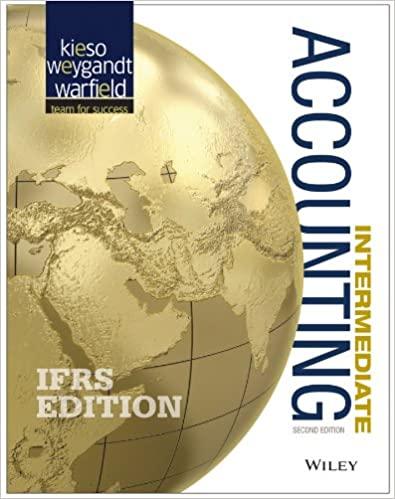Case 1: Merck and Johnson & Johnson Merck & Co., Inc. (USA) and Johnson & Johnson (USA)
Question:
Case 1: Merck and Johnson & Johnson Merck & Co., Inc. (USA) and Johnson & Johnson (USA) are two leading producers of healthcare products.
Each has considerable assets and each expends considerable funds each year toward the development of new products. The development of a new healthcare product is often very expensive and risky. New products frequently must undergo considerable testing before approval for distribution to the public. For example, it took Johnson & Johnson 4 years and $200 million to develop its 1-DAY ACUVUE contact lenses.
The following are some basic data compiled from the financial statements of these two companies.

Instructions
(a) What kinds of intangible assets might a healthcare products company have? Does the composition of these intangibles matter to investors—that is, would it be perceived differently if all of Merck’s intangibles were goodwill, than if all of its intangibles were patents?
(b) Suppose the president of Merck has come to you for advice. He has noted that by eliminating all research and development expenditures the company could have reported $1.3 billion more in net income. He is frustrated because much of the research never results in a product, or the products take years to develop. He says shareholders are eager for higher returns, so he is considering eliminating research and development expenditures for at least a couple of years. What would you advise?
(c) The notes to Merck’s financial statements state that Merck has goodwill of $1.1 billion. Where does recorded goodwill come from? Is it necessarily a good thing to have a lot of goodwill on your books?
Case 2: Analysis of Goodwill As a new intern for the local branch office of a national brokerage firm, you are excited to get an assignment that allows you to use your accounting expertise. Your supervisor provides you with the spreadsheet below, which contains data for the most recent quarter for three companies that the firm has been recommending to its clients as “buys.” All of the companies’ returns on assets have outperformed their industry cohorts in the past, but given recent challenges in their markets, there is concern that the companies may experience operating challenges and lower earnings. (All numbers in millions, except return on assets.)

Instructions
(a) The market value for each of these companies is lower than the corresponding book value. What implications does this have for each company’s future prospects?
(b) To date, none of these companies has recorded goodwill impairments. Your supervisor suspects that the companies will need to record impairments in the near future, but he is unsure about the goodwill impairment rules. Is it likely that these companies will recognize impairments? Explain.
(c) Using the above data, estimate the amount of goodwill impairment for each company and prepare the journal entry to record the impairment. For each company, you may assume that the book value less the carrying value of the goodwill approximates the fair value of the company’s net assets.
(d) Discuss the effects of your entries in part (c) on your evaluation of these companies based on the return on assets ratio.
Step by Step Answer:

Intermediate Accounting IFRS Edition
ISBN: 9781118443965
2nd Edition
Authors: Donald E. Kieso, Jerry J. Weygandt, Terry D. Warfield





